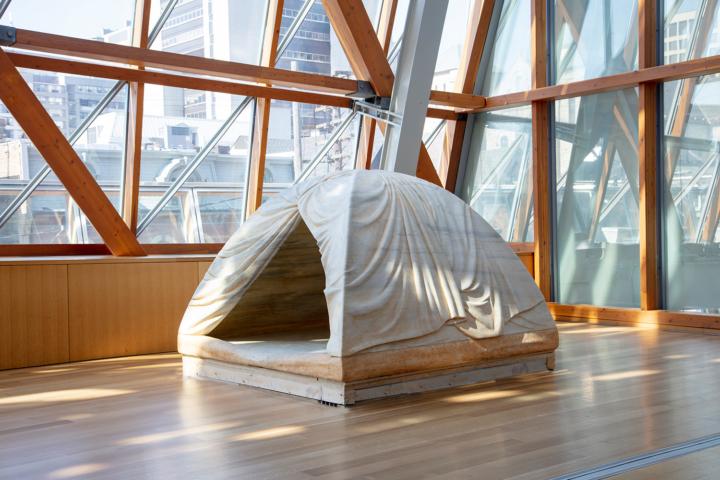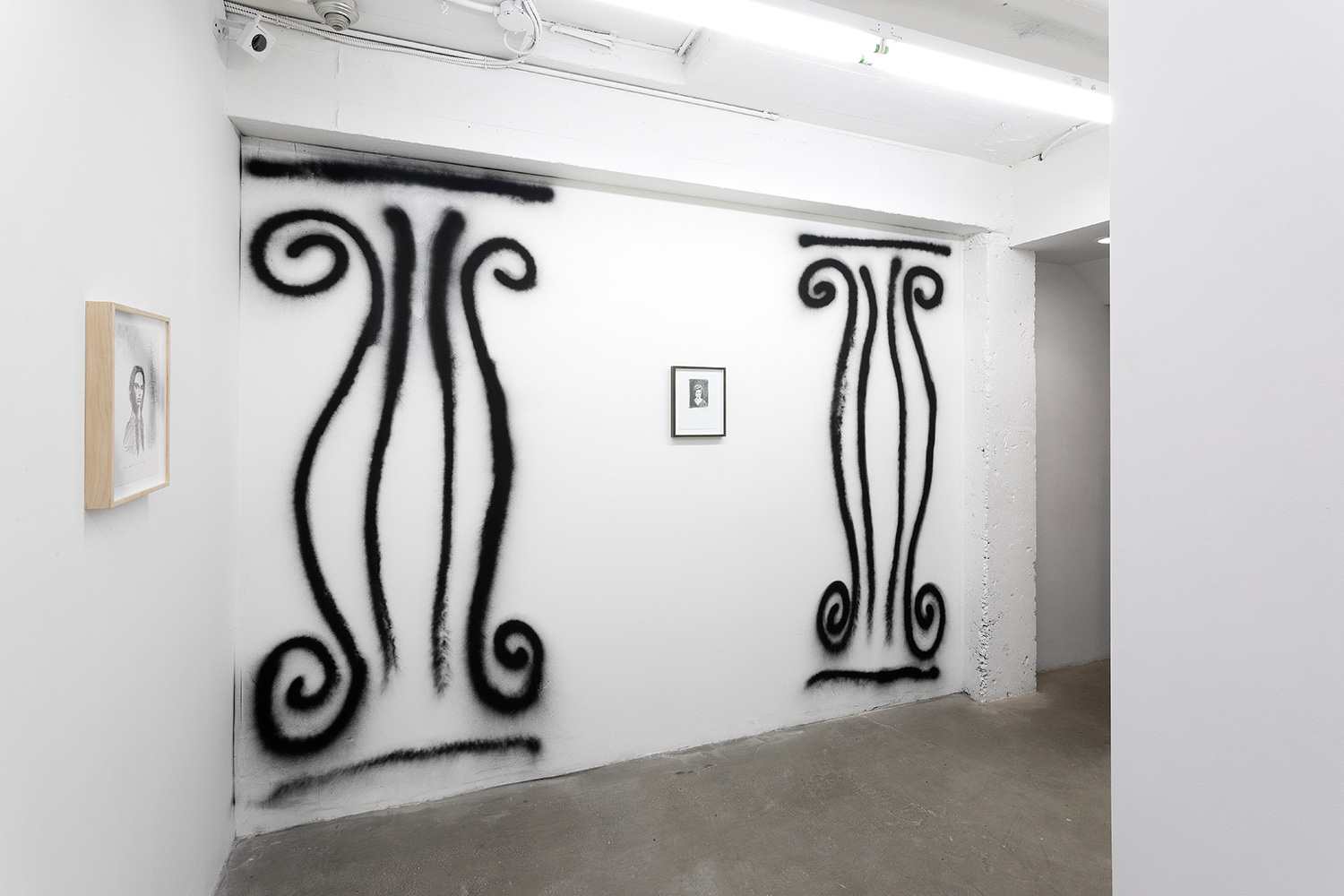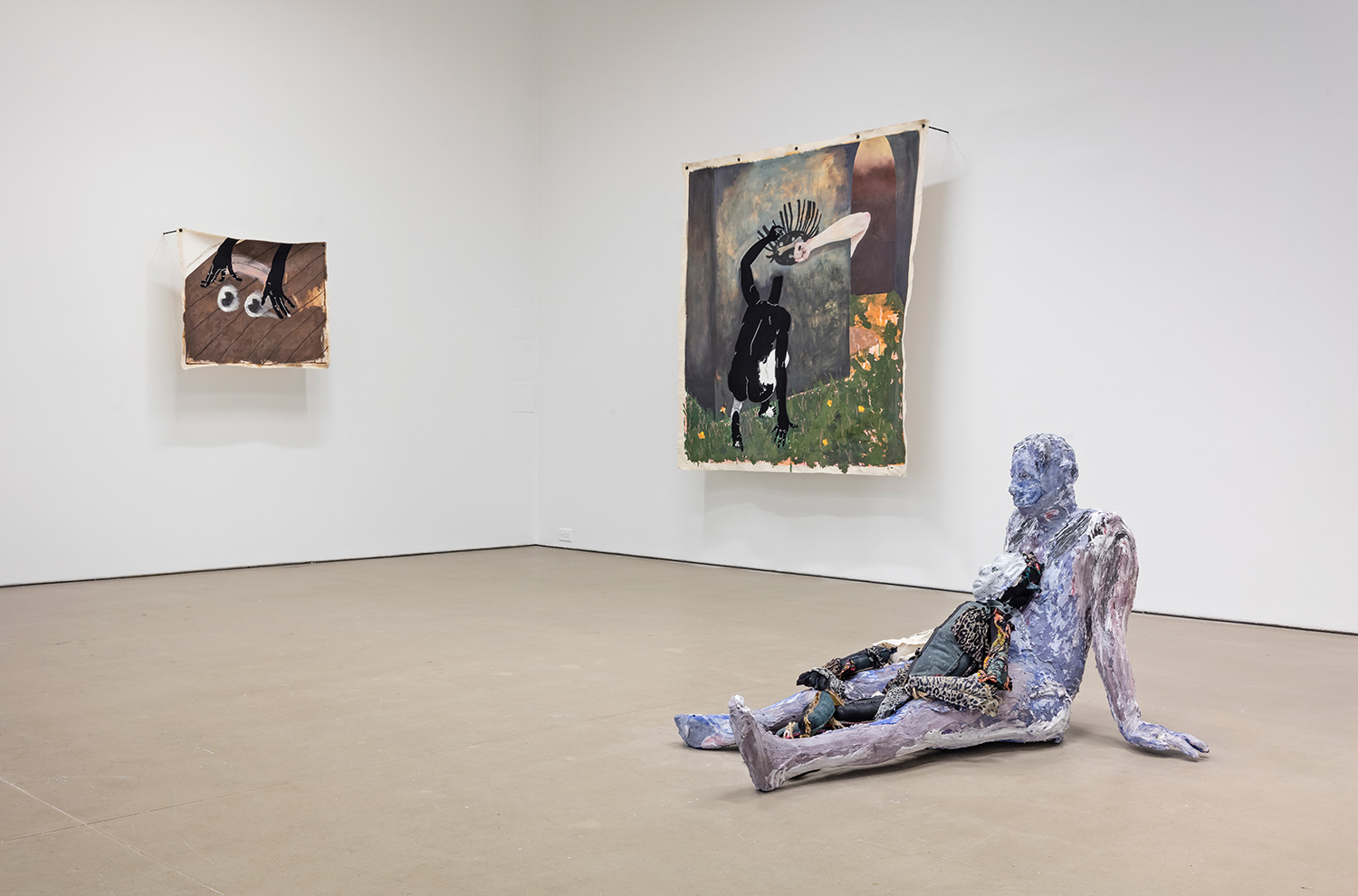Rebecca Belmore tackles complex political themes with a daring economy of means. Canada’s shameful record of missing and murdered indigenous women, systems of land use, and the sovereignty of First Nations as well as the vulnerability of migrant populations: Belmore engages some of the most urgent crises of our time. “Facing the Monumental” is an efficient yet emotionally powerful survey of the Anishinaabekwe artist’s career.
The taut syntax of Wanda Nanibush’s curatorial presentation unfolds as a carefully argued sequence of interrelated ensembles. Nanibush, the Art Gallery of Ontario’s first curator of indigenous art, has been lauded for her innovative prioritization of indigenous languages in the gallery’s trilingual didactic materials as well as the culturally sensitive retitling of historic (mis)representations of indigenous cultures.
Tower (2018), an imposing pillar of clay encased in stacked shopping carts evocative of the repetitive grammar of both Minimalist and First Nations art, is a declaration of the exhibition’s multivalent aspirations, where the “monumental” addressed by Belmore is simultaneously the institutional and symbolic legacies of colonialism and the resilient agency of a more-than-human nature. The totem-pole-like Tower is in productive dialogue with other works exposing structures of governmentality and resistance through a tactical repurposing of standardized materials and formats.

Belmore broaches themes of mortality and violence with a remarkable restraint that in no way mutes the emotional impact of the final grouping of works encountered by visitors. The two-channel video installation March 5, 1819 (2008), which restages the kidnapping of Beothuk artist Shanawdithit, is granted space for reflection that is unfortunately denied an extensive archive of Belmore’s performance works, which are relegated to a simultaneous, multi-channel projection in a modest room.
A more generous contextualizing of materials would have assisted viewers — particularly visitors and new arrivals to Canada — in navigating the dense histories excavated by Belmore’s layered narratives. Where “Facing the Monumental” triumphs is in demonstrating the provocative potential of the para-exhibitionary gesture. As interlopers in the Art Gallery of Ontario’s permanent collection, satellite works, including Biinjiya’iing Onji (From inside) (2017), a marble tent quarried from the same source as the Parthenon and originally installed in Athens for Documenta 14, forcefully materialize the nomadic logic of the global refugee crisis.



